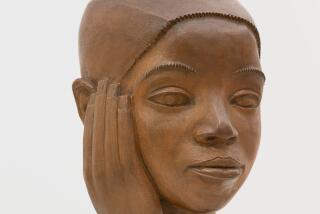Albert Mangones, 85; His Bronze Sculpture Became Haitian Symbol
- Share via
Albert Mangones, 85, a leading Haitian architect whose monumental sculpture “The Unknown Fugitive Slave” became a symbol of Haiti, died of pernicious anemia Thursday at his family home in Martissant.
Mangones designed the bronze in 1968. The sculpture, which stands in the central plaza in front of the National Palace, depicts a runaway slave holding a conch shell to his lips--a reminder of the call to rebellion against slave-holding France in 1791. The rebellion led to Haitian independence in 1804.
In 1989, the United Nations chose Mangones’ sculpture for a series of stamps illustrating the Universal Declaration of Human Rights.
Mangones studied architecture in Belgium and at Cornell University. In the 1940s, he co-founded the Center of Arts, which promoted the early work of primitive painters.
In 1948, he served as director-general of the seaside boulevard project in the capital city of Port-au-Prince. A model for similar seaside projects throughout the Caribbean, the boulevard features promenades, pavilions and colorfully lighted musical fountains.
He devoted the final years of his career to restoring the Citadel, the stone-and-brick fortress built on a remote northern mountainside by Haiti’s King Henri Christophe in the early 1800s.
More to Read
Sign up for Essential California
The most important California stories and recommendations in your inbox every morning.
You may occasionally receive promotional content from the Los Angeles Times.









